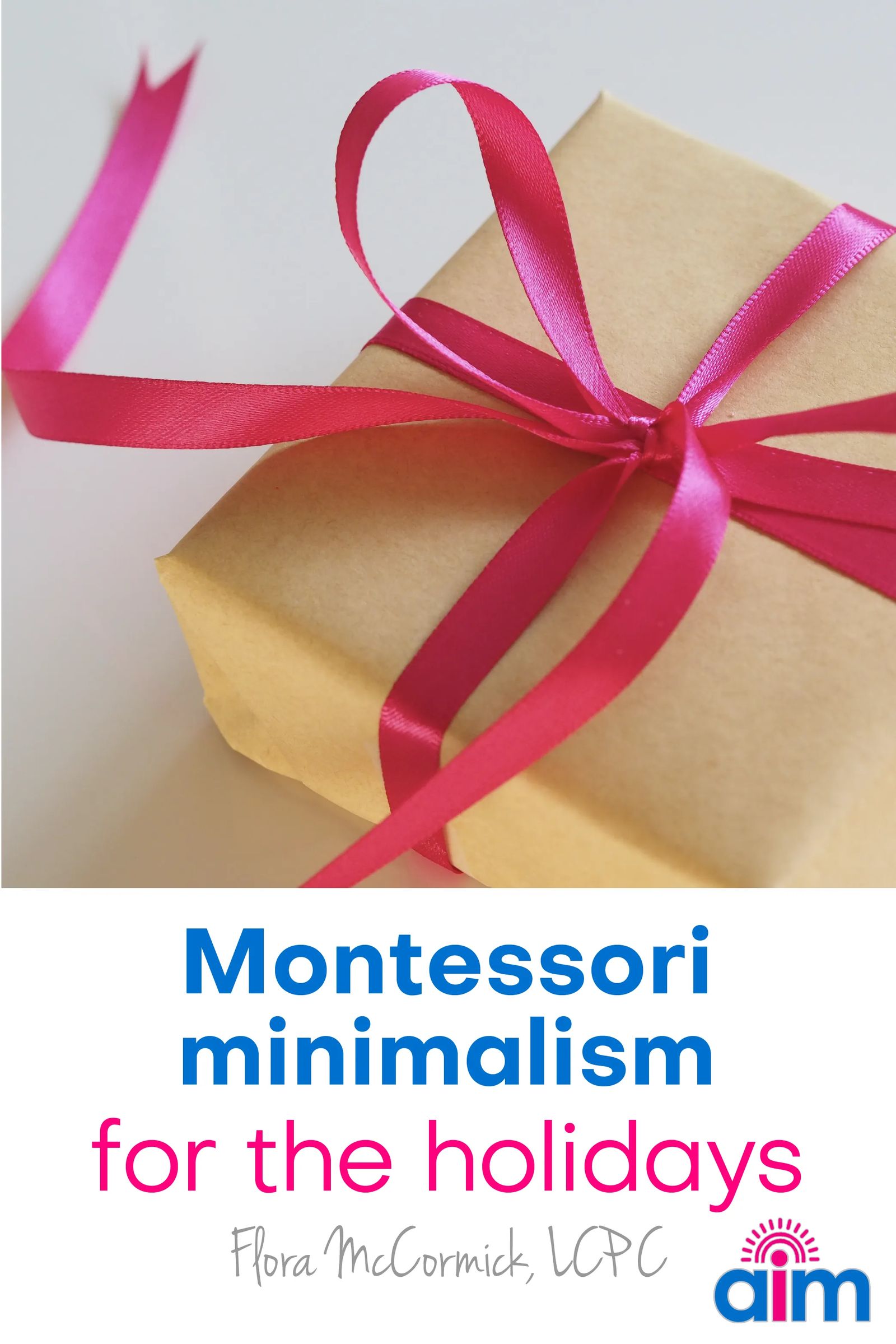
When it comes to the holiday season, it seems everything around you is preaching the message, “More is more!” When you look at any authentic Montessori environment, however, you will see the embodiment of the saying, “Less is more.” The space is intentionally minimalistic, and yet very rich and fulfilling for children. Everything is there for a reason. You can learn more about the prepared environment here. If you have chosen Montessori education for your children, why not seek to embody more Montessori principles in your home this holiday season?
Montessori Minimalism
for the Holidays
1. Communicate your values to your family/friends – many of my friends and family don’t really understand why I want to be minimal with my kids’ toys. I’ve been told I’m “holding others back from their enjoyment of giving to my child.”
These people in our lives really do mean well. They want to give because it’s a form of showing their love. However, it’s OK to also help those family and friends understand you are trying to support a home environment that is educational and not over-stimulating. You can even quote Maria Montessori, if that helps:
“Over-abundance debilitates and retards progress; this has been proved again and again by my collaborators.” ~ Maria Montessori (Advanced Montessori Method I, Kalekshetra, 1965)
2. Decrease Duplicate Toys: Look at your environment and see if you can decrease any duplicate toys. For instance, have just one “building” material available. If you have Legos, blocks, and K’nex, notice what your child plays with the most and put the other two into a closet where you can “trade” when the child’s interest decreases in the available item. I do this a lot with my son’s large and small tractors/trucks. We own a garbage truck, fire truck, tow truck and police car, but only one or two are out at any given time. The others stay in the closet, ready to trade. Many educators use this same principle in their classrooms, in order to keep the environment clean and organized.
Trading out learning tools also helps children to be more engaged with the options available. Every time I put away about half of my son’s toys (due to duplicates, and just overall simplification), I find he is WAY more engaged in the activities that are left available to him. Again, many educators use this same tool in the classroom. Trading out learning activities periodically helps to keep the children interested, without overwhelming them with too many options.
3. Apply the “1 in, 1 out” rule. This rule says that if you acquire a new toy, then something you already own needs to make its way out of the environment. Some people might choose to save items in storage, to be used later by a younger sibling, but the most refreshing way to use this tool is to really move the items “out” by giving them to your local thrift store or having a yard sale.
If possible, involve your children in choosing what toys they want to give away, in exchange for the new items they acquire during the holidays. Some families take photos of the things that they can't keep but want to remember. How and when and where they share this with the children can vary. This is especially helpful with saving work and art that kids bring home from school. But sometimes, you have to just do this work when your child is at school, making sure not to pitch something that has deep meaning for the child.
I hope this holiday season, you will benefit greatly from a touch of minimalism. If you would like to learn more about Montessori, check out our early childhood educator training or contact us at 406-284-2160.

Flora McCormick has been a Licensed Clinical Professional Counselor & Parenting Coach for 10 years, she helps parents of young children to calm the chaos, and revive connection and cooperation. Her strategies are sustainable for busy parents, using kindness & firmness at the SAME time. The result is an improved relationship with your child, where you can enjoy being a parent.






















